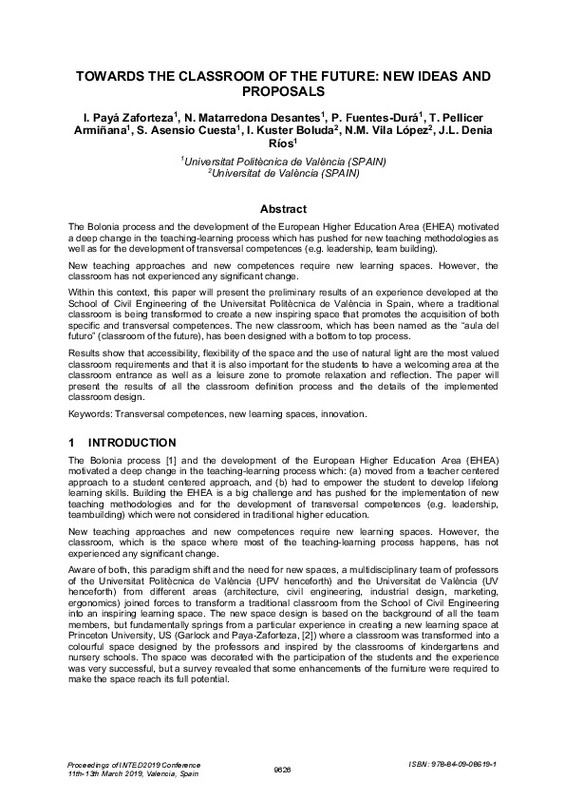|
Resumen:
|
[EN] The Bolonia process and the development of the European Higher Education Area (EHEA) motivated a deep change in the teaching-learning process which:
(a) moved from a teacher centered approach to a student centered ...[+]
[EN] The Bolonia process and the development of the European Higher Education Area (EHEA) motivated a deep change in the teaching-learning process which:
(a) moved from a teacher centered approach to a student centered approach,
(b) had to empower the student to develop lifelong learning skills.
Building the EHEA is a big challenge and has pushed for the implementation of new teaching methodologies and for the development of transversal competences (e.g. leadership, teambuilding) which were not considered in traditional higher education.
New teaching approaches and new competences require new learning spaces. However, the classroom, which is the space where most of the teaching-learnining process happens, has not experienced any significant change.
Within this context, this paper will present the preliminary results of an experience developed at the School of Civil Engineering of the Universitat Politècnica de València in Spain, where a traditional classroom is being transformed to create a new inspiring space that promotes the acquisition of both specific and transversal competences. The new classroom, which has been named as the ¿aula del futuro¿ (classroom of the future), has been designed with a bottom to top process where:
(1) Two workshops were organised with students, professors and university staff ¿e.g. staff in charge of the health and safety and the building maintenance as well as staff from the Instutute of Educational Sciences¿ to define the main general requisites that the classroom should have.
(2) Two workshops with multidisciplinary teams of students were organised to establish the ten principles that should guide the classroom design as well as to create two small scale prototypes of the new classroom.
Results show that accesibility, flexibility of the space and the use of natural light are the most valued classroom requirements and that it is also important for the studetns to have a welcoming area at the classroom entrance as well as a leisure zone to promote relaxation and reflection. The paper will present the complete results of all the classroom definition process and the details of the implemented classroom design.
[-]
|









